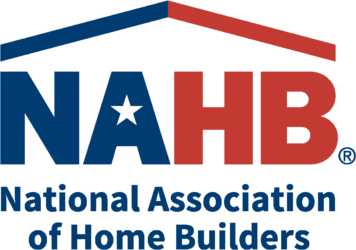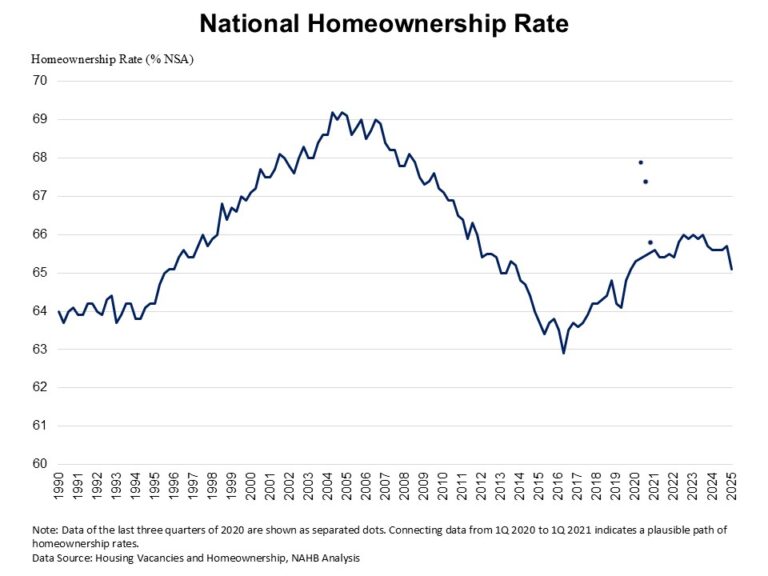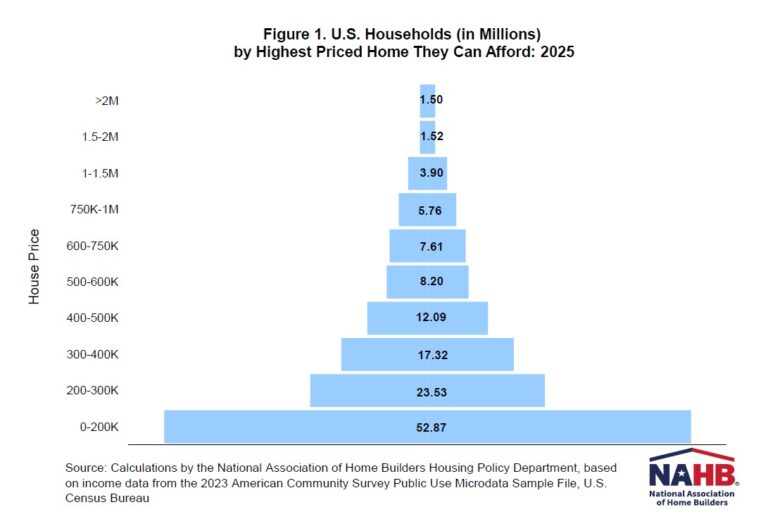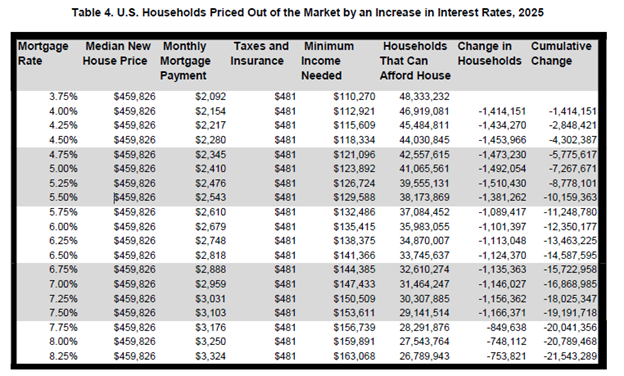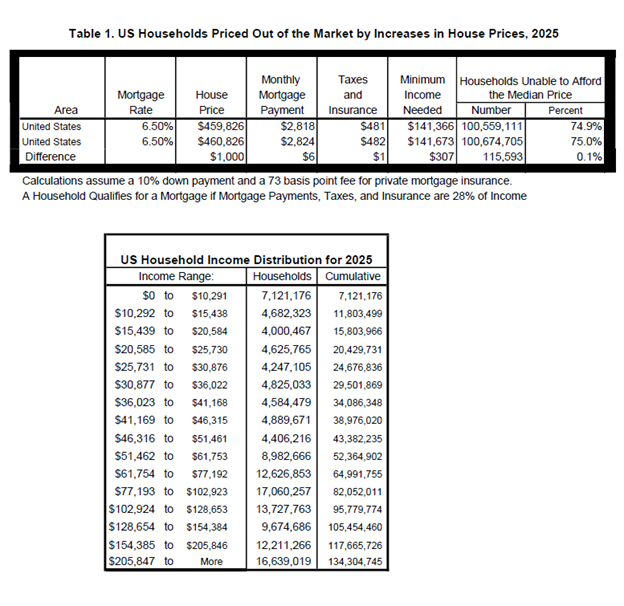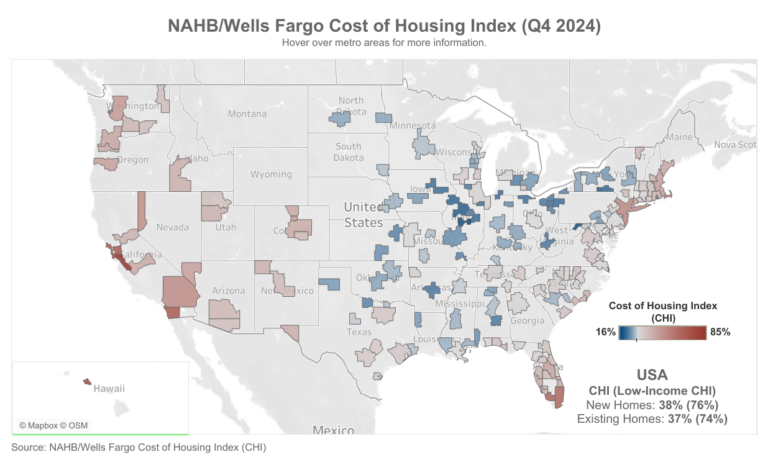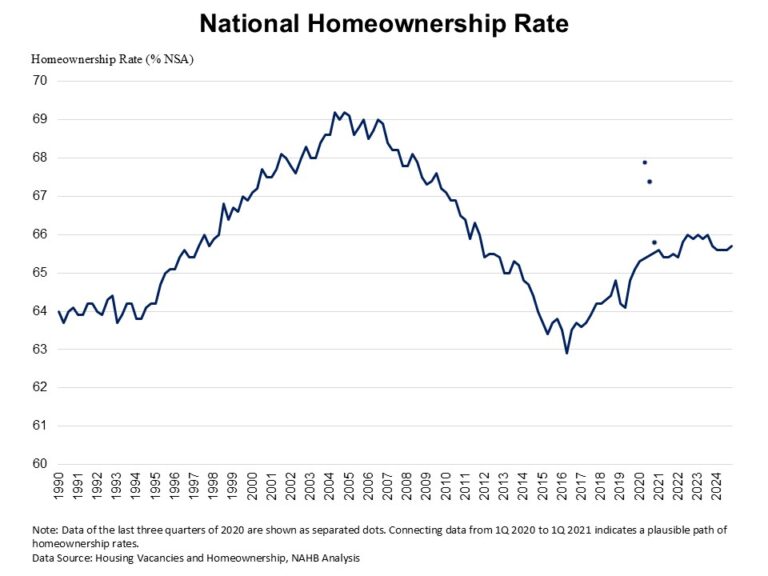Despite solid income gains and lower home prices, Americans still continue to face major housing affordability challenges, according to the latest data from the National Association of Home Builders (NAHB)/Wells Fargo Cost of Housing Index (CHI). The CHI results from the first quarter of 2025 show that a family earning the nation’s median income of $104,200 needed 36% of its income to cover the mortgage payment on a median-priced new home. Low-income families, defined as those earning only 50% of median income, would have to spend 72% of their earnings to pay for the same new home.
The figures track closely for the purchase of existing homes in the U.S. as well. A typical family would have to pay 35% of their income for a median-priced existing home while a low-income family would need to pay 70% of their earnings to make the same mortgage payment.
The percentage of a family’s income needed to purchase a new home fell from 38% in Q4 2024 to 36% in Q1 2025, as a result of a 6.5% rise in median family income and a 1% decline in the median price of a new home. The low-income CHI also fell from 76% to 72% over the same period.
Affordability of existing homes also edged higher for both median- and low-income families between Q4 2024 and Q1 2025. The CHI indices were 35% and 70% in the first quarter vs 37% and 74%, respectively, in the fourth quarter. The uptick was due to the increase in median income and a 2% drop in median existing home prices.
The U.S. data for the percentage of earnings needed to purchase a new home in Q1 2025 is based on a national median new home price of $416,900 and median income of $104,200. The first quarter median new home price is down slightly from $419,200 in the fourth quarter. The corresponding price for an existing home in the first quarter is $402,300, down from the $410,100 in the previous quarter. The average 30-year mortgage rate increased from 6.72% in Q4 2024 to 6.91% in Q1 2025.
CHI is also available for 175 metropolitan areas, calculating the percentage of a family’s income needed to make the mortgage payment on an existing home based on the local median home price and median income in those markets.
In nine out of 175 markets in Q1 2025, the typical family is severely cost-burdened (must pay more than 50% of their income on a median-priced existing home). In 75 other markets, such families are cost-burdened (need to pay between 31% and 50%). There are 91 markets where the CHI is 30% of earnings or lower.
The Top 5 Severely Cost-Burdened Markets
San Jose-Sunnyvale-Santa Clara, Calif., was the most severely cost-burdened market on the CHI, where 88% of a typical family’s income is needed to make a mortgage payment on an existing home. This was followed by:
Urban Honolulu, Hawaii (74%)
San Diego-Chula Vista-Carlsbad, Calif. (68%)
Naples-Marco Island, Fla. (66%)
San Francisco-Oakland-Fremont, Calif. (64%)
Low-income families would have to pay between 128% and 176% of their income in all five of the above markets to cover a mortgage.
The Top 5 Least Cost-Burdened Markets
By contrast, Elmira, N.Y., was the least cost-burdened markets on the CHI, where typical families needed to spend just 15% of their income to pay for a mortgage on an existing home. Rounding out the least burdened markets are:
Decatur, Ill. (16%)
Peoria, Ill. (16%)
Springfield, Ill. (16%)
Davenport-Moline-Rock Island, Iowa-Ill. (17%)
Low-income families in these markets would have to pay between 31% and 35% of their income to cover the mortgage payment for a median-priced existing home.
Visit nahb.org/chi for tables and details.
Discover more from Eye On Housing
Subscribe to get the latest posts sent to your email.
This article was originally published by a eyeonhousing.org . Read the Original article here. .
